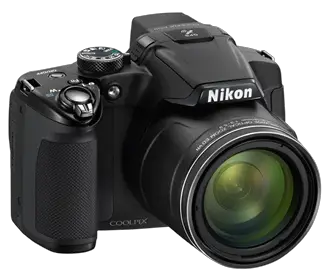Digital Cameras By Gabe Torok  What is the difference between a 700 sq. ft. batchelor apartment, a 1200 sq. ft. condo, or a 2500 sq. ft. house? Lots, you say? Of course. The larger the area, the more comfort and more furniture can be placed. In another words, more 'detail' for your comfort. Now look at digital cameras. I had a photography business that did very well, until my arthritis forced me to sell it. During that time, I owned and used a number of digital and SLR cameras, mostly Nikon. I also owned a Sony and several lesser pocket cameras. The transition from film to digital went from Nikon 90FX to Nikon D1H, mainly because I could still use all my Nikon lenses on the D1H. The D1H was a 3.2 megapixel camera that took excellent quality photos with it's three colour sensors. Sony came up with a camera adding in a fourth colour sensor that was hyped as providing richer colour and more vivid greens. Although it was a larger count of megapixels, the portraits were off colour and not as satisfactory as with the D1H and it had a fixed lens that could not be interchanged. After using the Nikon for a year, small dark spots began appearing, light at first, on the pictures. I sent the camera back to Nikon for servicing. $780 later, the spots were still there. It was then that I found out that digital cameras, although offering interchangeable lenses as an option, are NOT meant to have lenses that are removable. The first picture taken with a digital camera magnetizes the sensor. Once magnetized, it attracts dust and when you change lenses, the body is open and dust attaches to the sensor. After a while, these dust particles burn into the sensor, causing the spots. It was cheaper to buy a brand new camera than to have the sensor replaced. It was good excuse, as, like many people, I wanted a camera with more of those elusive little megapixels. This is where the comparison of living space comes in handy. Did you know that you can put the same amount of megapixels on an 8 MP sensor as you can on a 3 MP? Megapixels are not equal. There are three sizes of sensors used most commonly, much like the living space example. The larger the sensor, the higher quality of the photo. It's hard to tell the difference on a 5x7 inch print, but when you enlarge the picture, the pixel difference is obvious. The larger the sensor, physically, the better enlargement is possible. The size of the sensor in my D1H was three times larger than in Nikon's P80 10.1 Megapixel camera. With cameras, everything is important, features, lenses, intended use, etc. However, ignore the megapixel count and ask what size is the sensor provided in the camera. It's not something salesmen are anxious to talk about, unless the sensor in question is the largest on the market. Also, remember that those little spots from dust are not unique to cameras with interchangeable lenses. I have a Minolta G400 4 MP pocket camera with a fixed lens that is now showing signs of spots. Dust gets into everything. At least with film, you always start with a fresh clean roll.Lastly, just remember that moisture is a cameras greatest enemy, followed by a bad subject. |